Quick Links
Glitter is a staple in the world of fashion, beauty, and art, adding sparkle, fun, and glamour to anything it touches.
However, traditional glitter is made from small pieces of plastic that take hundreds of years to decompose, causing harm to the environment and wildlife.
As awareness of plastic pollution grows in society, more people and brands are looking for alternatives to conventional plastic products. Biodegradable glitter is one of those alternatives.
But does it actually exist, or are we being greenwashed?
Join us as we uncover the harsh realities of the cosmetic use of biodegradable glitter and empower ourselves to make better choices for our planet’s future.
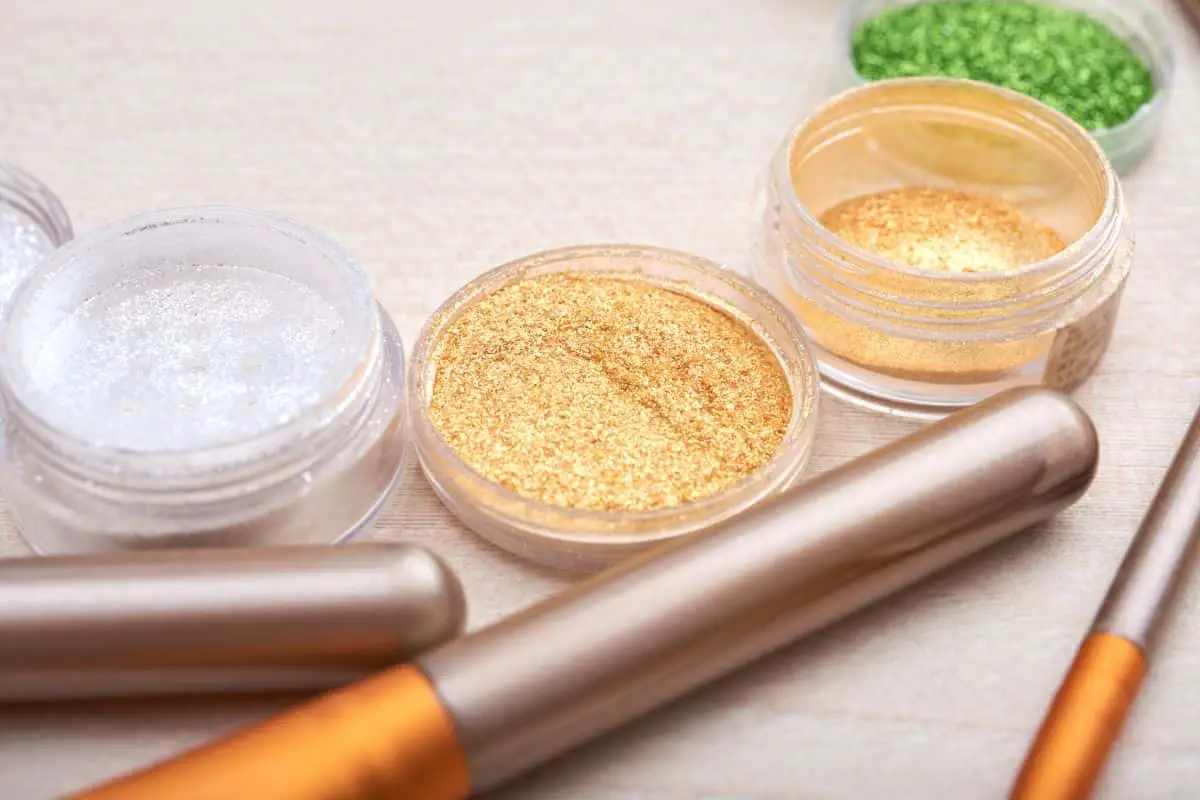
The Problem with Traditional Glitter
Traditional glitter is made from microplastics, tiny pieces of plastic that range from 0.05 to 6 mm in size.
These microplastics are not biodegradable and can take hundreds of years to decompose. As a result, when glitter is washed off, it ends up in our oceans and waterways, harming marine life and ecosystems.
Furthermore, glitter particles can be ingested by fish and other marine animals, causing an extensive range of health problems and potentially ending up on your dinner plate, especially if you consume fish or use sea salt.
Related: Which salts are safe from microplastics?
A 2021 study found that glitter is one of the top ten contributors to marine pollution, and surprisingly, biodegradable glitter isn’t the solution either.
Microplastics are becoming a significant issue. They rain down on us, and we consume them through our water, food, and many other products. Even our clothes are made from synthetic fibers that break off during washing and end up in the natural environment somewhere.
This serious environmental issue has led to calls for a ban on traditional glitter and a search for more, sustainable packaging and eco-friendly cosmetic alternatives.
A Brief History of Glitter
The name “glitter” actually originates from the Old Norse word “glitra,” meaning “to shine.” This shimmering decoration was used in prehistoric cave paintings and even in the cosmetics of Ancient Egyptians, who crafted a radiant mixture from the iridescent shells of beetles and finely ground malachite. More info on this website about the history of glitter.
Glitter was invented by an American named Henry Ruschmann, a machinist from New Jersey, USA, who created the first machine to produce modern glitter in 1934. Initially used in the automotive industry and wallpapers, glitter eventually found its way into the world of fashion and beauty.
This material is made from a combination of aluminum and either PET or PVC plastic, with the aluminum lending the lightweight plastic core its reflective silver sheen. After adding the desired color, this sparkling mixture is compressed into an ultra-thin sheet and carefully sliced into tiny, gleaming fragments, aka microplastic.
Craft glitter comes in larger square or hexagonal shapes, adding a fun and lovely touch to our DIY craft projects and more. On the other hand, smaller round particles are made for beauty products for easy application or to create a bonding or scrubbing effect. These are also known as microbeads and have been banned in many countries.
Despite its charming appearance, this seemingly harmless substance has created a significant environmental impact, which calls for reconsidering our relationship with these glittering particles.
What is Biodegradable Glitter? Does it Even Work?
Biodegradable glitter, or bio glitter, is an eco-friendly alternative to traditional glitter. It’s made from plant-based materials that break down quickly and harmlessly in the environment, or so we are told.
Instead of having a plastic core, it has a Modified Regenerated Cellulose (MRC) core made from eucalyptus trees. This core then receives an aluminum coat, followed by a thin coat of plastic before it’s cut.
Yes, plastic, you read that right, plastic. But how on earth can they call it biodegradable glitter, you might ask? That’s because terms like ‘biodegradable’ or ‘eco-friendly’ aren’t regulated and can be freely used by marketing companies.
Misleading, right? Additionally, a study in 2020 showed that there’s hardly any difference between biodegradable glitter, eco glitter, and non-eco glitter.
I don’t want to dampen the mood, but to me, it screams greenwashing. But hey, what on earth are the alternatives to plastic glitter?
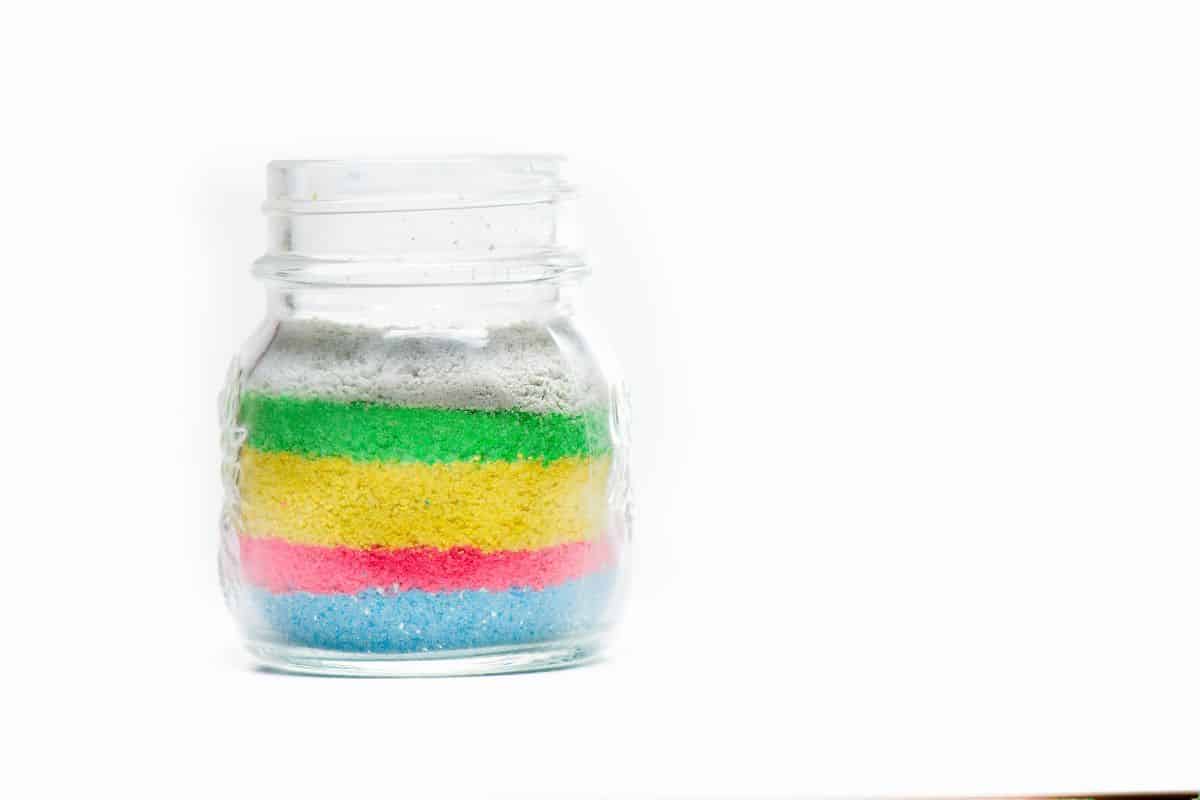
Alternatives to Conventional Glitter?
As you may have guessed, finding an alternative to plastic glitter that performs well without posing a danger to the natural environment isn’t easy.
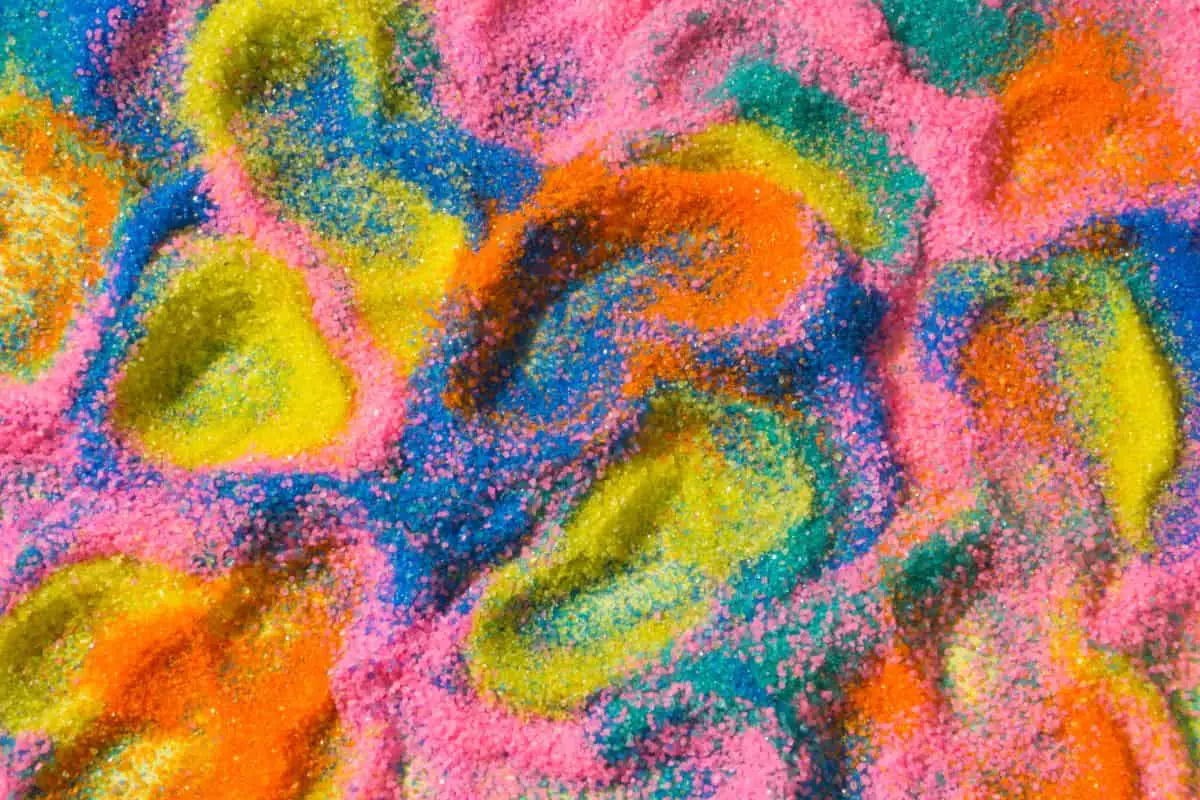
Colored Sand
Colored sand is one of the most ecological ways to make eco-friendly, colorful, and fun compostable glitter. While sand doesn’t possess the same light-reflecting properties as conventional glitter, it can create a textured, shimmering effect in arts and crafts projects. The sparkle and shine of sand-based “glitter” will be subtler and less intense than traditional glitter, but it can still add an interesting visual element to your projects.
To create a sand-based alternative to glitter, you can follow these steps:
- Collect fine-grained sand, either from a natural source or purchased from a craft store. Ensure it is clean and dry before using it.
- To add color to the sand, pour it into a resealable plastic bag or a glass jar with a lid.
- Add a few drops of non-toxic, food-safe coloring or natural dyes (such as beet juice, turmeric, or spinach) to the sand. You can also use powdered, eco-friendly pigments.
- Seal the bag or jar and shake it vigorously until the color is evenly distributed throughout the sand.
- Spread the colored sand onto a tray or baking sheet lined with parchment paper, allowing it to dry completely. This may take several hours or up to a day, depending on the type of dye used and the humidity in your environment.
- Once the sand is dry, use it as a textured, shimmering alternative to glitter in various arts and crafts projects.
Keep in mind that sand-based “glitter glue” will not adhere to surfaces as easily as conventional glitter, so you might need to use a non-toxic, biodegradable adhesive for your glitter projects. Also, sand can be heavier than traditional glitter, which may affect the final result of your glitter project, especially if you’re working with lightweight materials.
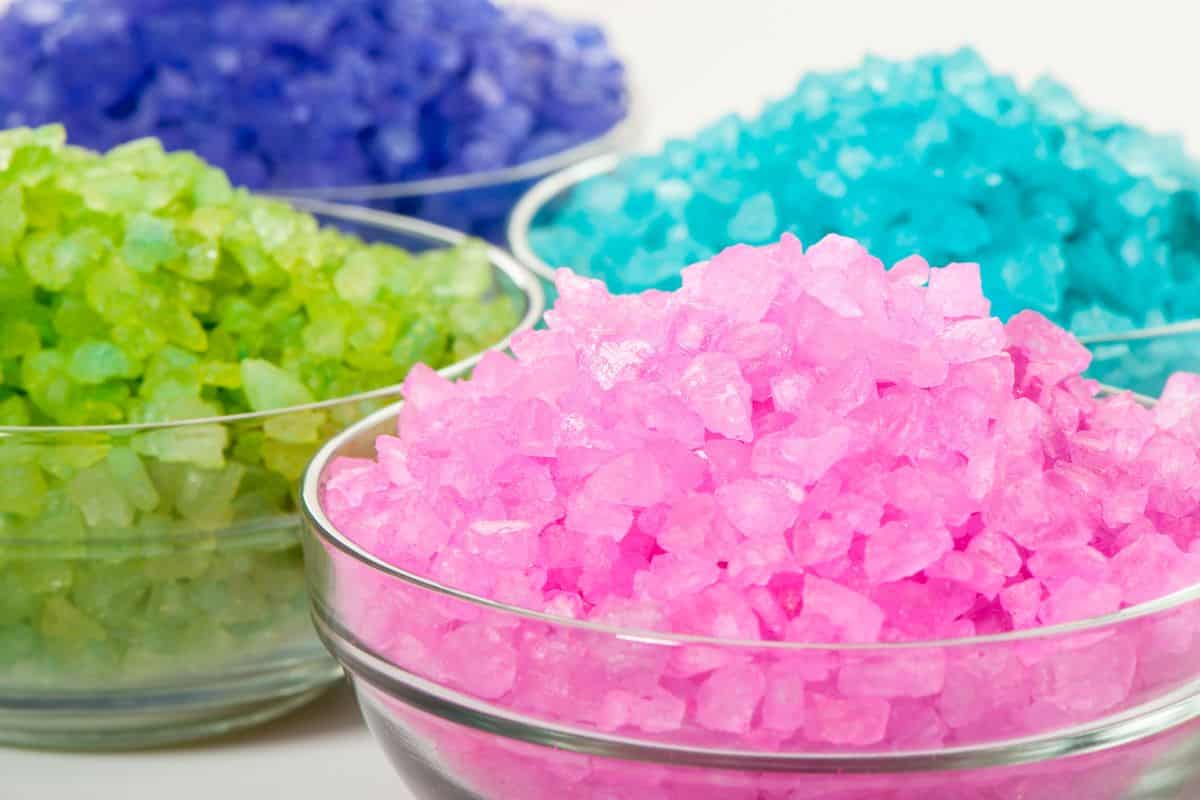
Colored Salt
Salt can be used as a base for glitter, creating a fun DIY, eco-friendly glitter substitute. However, it’s important to note that salt-based glitter won’t have the same intense sparkle or light-reflecting properties as traditional glitter. To make your own colored salt “glitter,” follow the same steps as you did with colored sand.
Recycled Paper
Remember the days when we used hole punches for our homework and found ourselves amidst a colorful flurry of paper bits? Or the times when old magazines were no longer being read? These are perfect resources for creating plastic-free glitter, allowing for guilt-free sparkle. However, do keep in mind that some magazines, often the durable ones received via mail, may be coated with plastic, making them less eco-friendly.
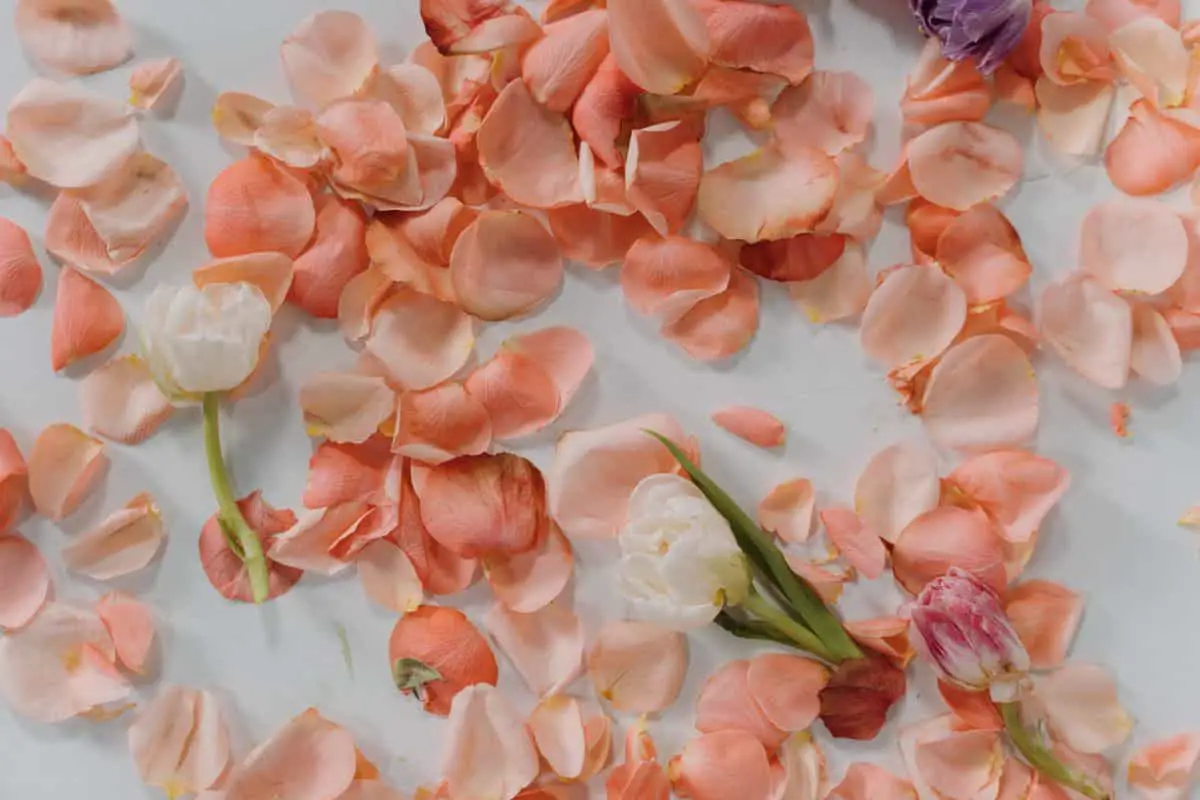
Flowers and Petals
Have you ever thought about using your garden as a source of biodegradable glitter? Picking flowers and petals can provide you with beautiful, compostable sparkles. Although they may not have the same shine as traditional glitter, they are one of the most environmentally- responsible sparkles alternatives available.
Colored Rice/Oats
Here’s another plastic-free glitter solution that you can make right at home. Chances are, you already have all the ingredients you need in your pantry. Simply color your rice or oats with natural, eco-friendly dyes, let them dry, and voila! You’ve got yourself an eco-friendly glitter substitute.
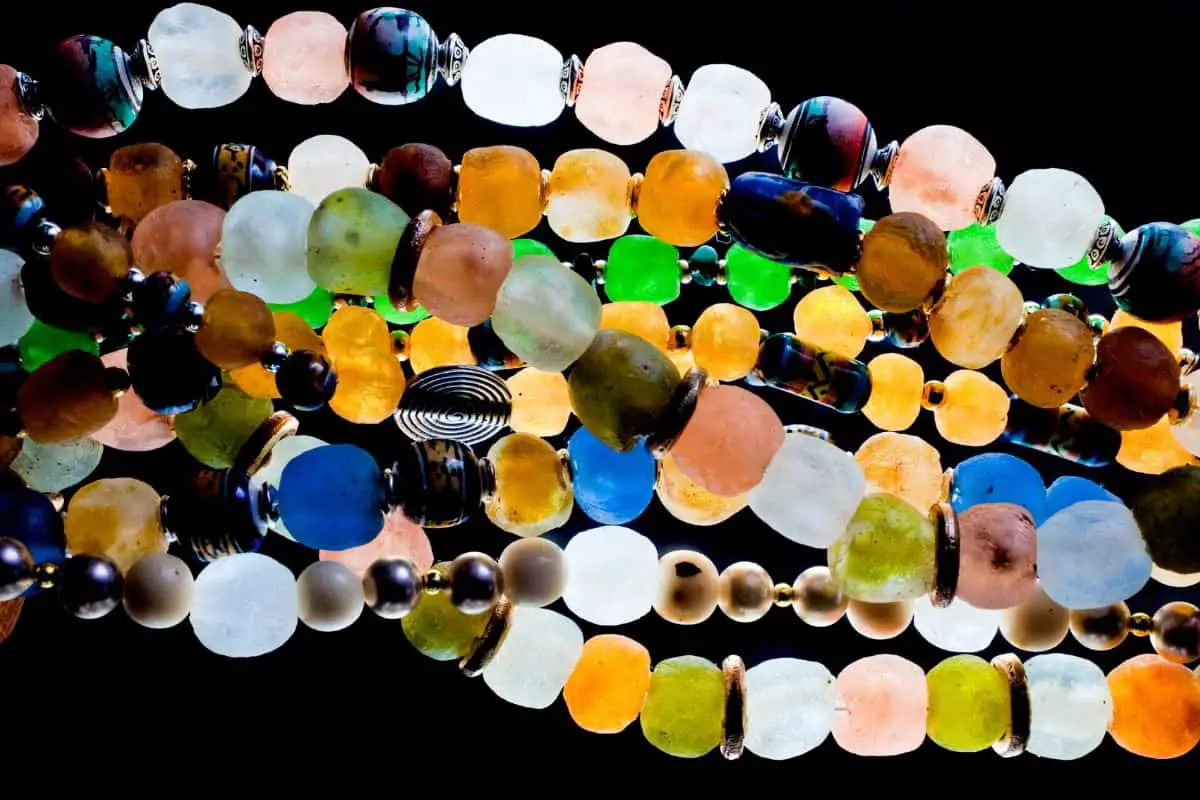
Colored Glass
This might require a bit more effort, but crushed, colored glass can be a stunning, reusable alternative to traditional glitter. However, remember to handle with care, as glass shards can be sharp. Always ensure to smooth out any sharp edges before use. These sparkling pieces can be used in a variety of crafts and decorations, adding a unique and sustainable touch to your creations.
By opting for these alternatives, we can continue to enjoy the sparkle and fun of glitter, while reducing our contribution to plastic pollution. It’s a small but meaningful step towards a more sustainable lifestyle.
Conclusion
As much as I would like to say that biodegradable glitter is the solution to this problem, sadly, it isn’t the case. I’ve seen YouTuber Mark Rober using biodegradable glitter in his glitter bombs, and I was always a little skeptical about it. According to those studies, my skepticism was justified. It’s an unfortunate reality. I understand that colored salt and sand might not work for everyone and that they don’t quite replicate the sparkle of traditional glitter. But that’s just how it is, and I think we need to rethink how we use these products.
Your text is mostly clear but requires a few minor corrections for better readability and grammar. Here’s the revised version:
I reached out to ecostardust.com, and they responded quite quickly, confirming that they use the above-mentioned MRC. However, when it came to the details, they remained silent and did not answer my follow-up questions. This leads me to suspect that they are fully aware of the nature of the plant-based glitter they are selling, which isn’t plastic-free.
A similar situation occurred when I was researching discoverbioglitter. They have all these fancy-looking certifications, but can we truly trust them?
I hope this article was helpful, and I look forward to seeing you in the next blog post. Thanks, and have a good day.
